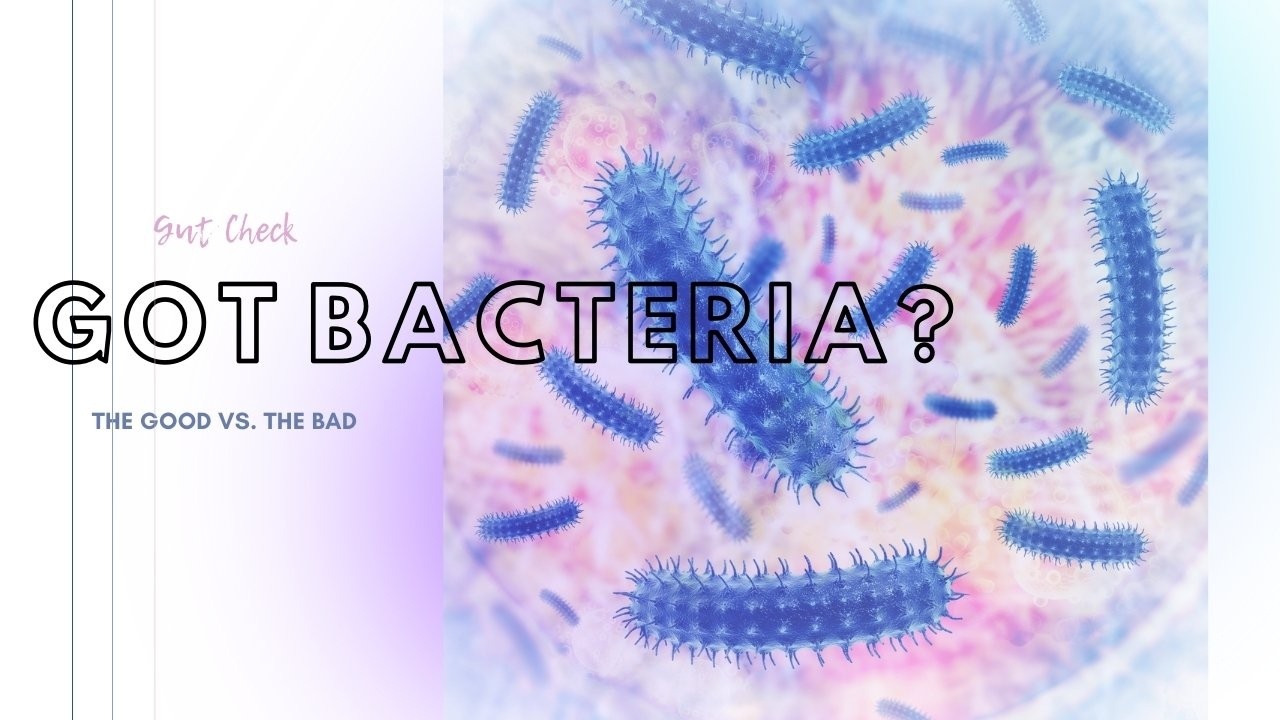
Got Bacteria?
Jul 08, 2019Don’t go grabbing for that hand sanitizer as you read this blog. Not all bacteria are bad! In fact, we need good bacteria in our gut for immunity, absorption of nutrients from food, protection from pathogens, synthesizing vitamins, creation of short-chained fatty acids, and metabolizing bile (to name a few roles).
We Are More Bacteria Cells Than Human Cells
Did you know that there are about 10 bacteria cells to every 1 human cell living in and on us? There is a lot of research about the positive role beneficial bacteria can have on a person’s overall health. So let’s explore begin to explore the fascinating world of the microbiome!
What is the Microbiome
The word microbiome refers to an ecosystem inhabited by nonhuman microorganisms. The microorganisms of the human microbiome live within the GI tract, vagina, mouth, and skin. We begin “collecting” these friendly bacteria at birth from the vaginal canal, breast milk, as well as the humans and the environment the baby encounters upon arrival into this world. Exposure to these beneficial bacteria at birth is believed to reduce the likelihood of autoimmune disease, diabetes, obesity, and asthma.
Good Bacteria vs Bad Bacteria
So what defines a “good” bacteria versus a “bad” bacteria? Bad bacteria is typically one that is pathogenic and can wreak havoc on our system or even cause illness (i.e. E.Coli, Staphylococcus, C.Diff, Klebsiella, Lyme, syphilis, etc). These are usually identified as gram-negative bacteria. They are more resistant to antibiotics. The outer membrane contains lipopolysaccharides (LPS) which create inflammation.
Good bacteria include strains of Lactobacillus and Bifidobacterium. These are classified as gram-positive bacteria. Gram-positive bacteria are more susceptible to death with antibiotics and are slower to develop resistance. A balanced microbiome actually consists of about 85% beneficial bacteria to 15% harmful bacteria.
The Microbiome Imbalanced
So if we have so much more good bacteria than bad bacteria, how in the world does it become unbalanced? Well, there is a genetic connection to the composition of the gut microbiome. Cystic Fibrosis, Crohn’s Disease, and Ulcerative Colitis have all been shown to have altered microbiome colonization.
But there are also factors that are not genetic that can alter the bacteria living in our gut.
-
Overuse of antibiotics and anti-bacterial hand sanitizers has decreased our exposure to microbes. Microbes need to come in contact with other microbes to activate good bacteria. If you have taken antibiotics, it not only kills the pathogenic bacteria, but also the beneficial bacteria. If you have not rebuilt your microbiome after antibiotic use, then it is destroyed. Time to build!
-
The Standard American Diet (SAD) is high in refined grains, oils, and sugars and low in whole grains, legumes, and non-starchy vegetables. Highly processed foods are low in micronutrients. Often the SAD consists of non-organic produce and conventionally raised meat and seafood. This increases the opportunity to be exposed to GMOs, antibiotics, and hormones. Artificial sugar and sweeteners can also destroy the gut microbiome. And the lack of fiber in the SAD decreases short-chained fatty acid (SCFA) which protects against pathogenic bacteria, and gut inflammation, and provides energy for colonocytes. SCFAs are also required for the production of vitamin B12 and vitamin K.
-
Stress stimulates the sympathetic nervous system. The sympathetic nervous systems put our body into “fight or flight” mode. When this occurs, blood is diverted away from the GI system. Digesting your food when threatened is not going to save you from the mountain lion chasing you. But running and fighting that mountain lion can! If we are constantly in a state of stress, our body is going to be lower in microbial diversity. Plus the increased inflammation can lead to increased permeability of the intestinal lining (leaky gut) and sensitivity to foods.
-
Poor sleep habits can also disrupt the microbiome. Our gut has its own circadian rhythm. It regulates when gastric acid is produced, GI motility, and the release of diurnal defensins (released once a day and defend against bacteria consumed). Bacteria in the gut are also responsible for the production of the neurotransmitters serotonin, dopamine, and GABA. A happy, rested gut equals a happy, healthy you!
What are the signs and symptoms of a possible microbiome imbalance?
-
Indigestion
-
Diarrhea
-
Fatigue
-
Brain Fog
-
Allergies
-
Skin Disorders (acne, eczema, rosacea, etc)
-
Frequent Antibiotic Use
Addressing a Microbiome Imbalance
Understanding the root cause of the symptoms you might be experiencing is the first step. I recommend taking a deeper dive into your symptoms by exploring a test. Tests provide a roadmap for your wellness journey.
Once we understand the root cause of the symptoms, we can then implement the 5R's for restoring gut health. Head on over to my blog on the 5 R’s that are recommended for gut restoration.
Are you overwhelmed by all of the conflicting information regarding health, hormones, nutrition, and weight management?
Join me once a month for a FREE "Ask Me Anything" live Zoom sesh! I'll answer all the questions you've been spending so much time searching the internet for.









